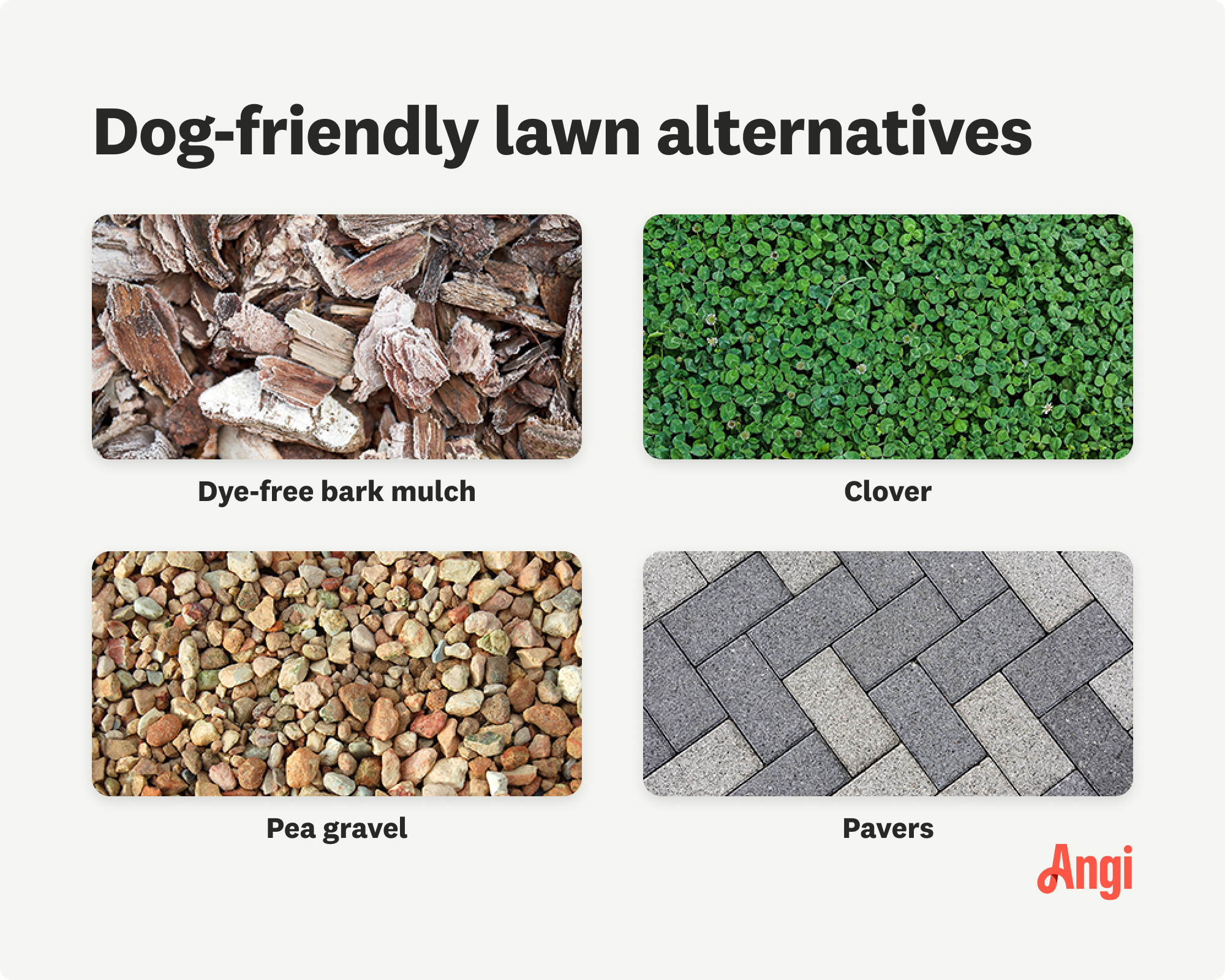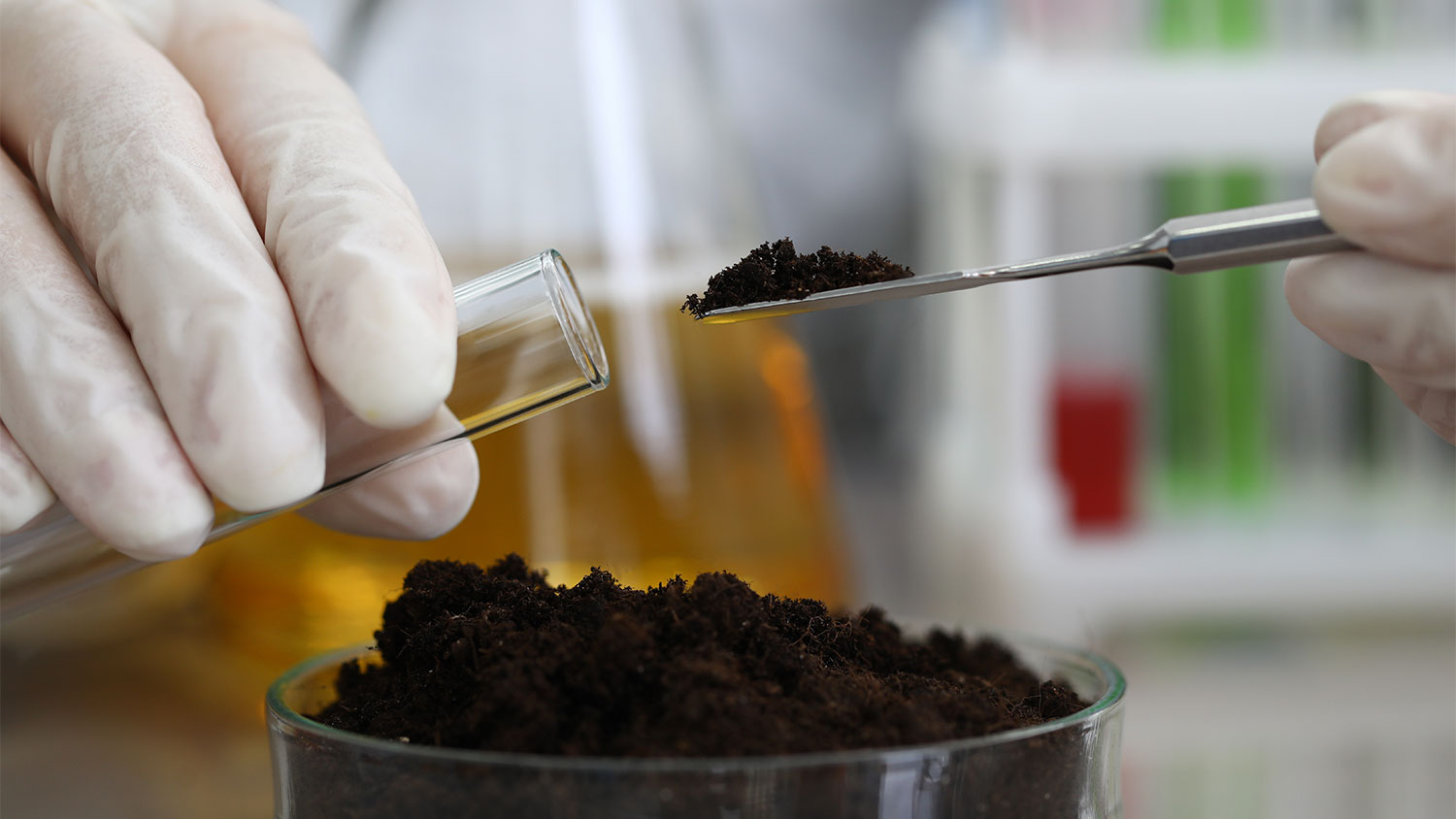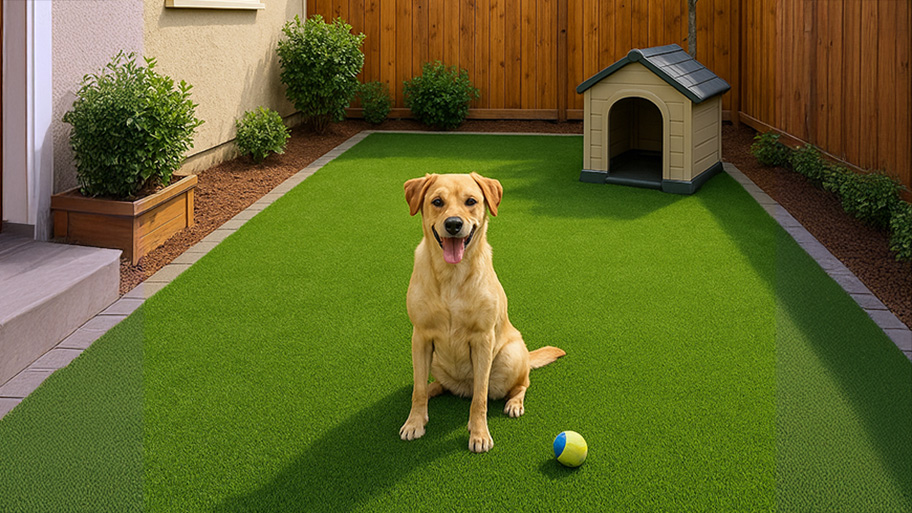
A landscape designer can elevate your outdoor space and bring your vision to life. Use this landscape design cost guide to budget for your next project.
Your canine companion will “dig” this lawn alternative


Artificial grass is low-maintenance and stain-free.
Artificial grass is ideal for dogs with allergies.
Artificial grass can get too hot for dogs on summer days.
Look for artificial grass with dog-friendly design features.
When you’re over the urine patches throughout your yard, an alternative to natural grass (the artificial kind) starts to sound enticing. Naturally, you want to know the pros and cons of artificial grass with dogs before you commit. Read on to find out what they are and what pet-centric design features to look out for if you opt for this low-maintenance solution.
Yes, you’ll find that they’re quite pet-friendly. While they might be more costly than traditional grass, they are easier to clean and are immune to holes. But don’t take our word for it. Let’s look at the pros and cons of artificial grass with dogs below.
| Pros of Artificial Grass With Dogs | Cons of Artificial Grass With Dogs |
|---|---|
| No urine stains | Absorbs heat |
| Safe for dogs with grass allergies | Pricey initial cost |
| Mud-free playing | Smells if not cleaned |
| Doesn’t need pesticides or fertilizers | Environmental impact |
| Dig-free zone | Texture |
| Easy to clean |
Installing artificial grass for your pups has superb advantages compared to natural grass. One key benefit is that it’s a low-maintenance option that doesn't require mowing, edging, fertilizing, or reseeding. Let’s look at a few other benefits of switching to synthetic grass.
A dog’s urine has a high concentration of nitrogen. While it’s generally good for plants, too much of a good thing can burn your grass and lead to those unsightly urine stains. You won’t have that same problem with artificial grass since nitrogen overload doesn’t phase it.
Some dogs are allergic to grass and can’t play in it without developing symptoms such as itching and sneezing. However, artificial grass isn’t natural, so it doesn’t have the allergens commonly found in it that cause allergy flares. So, if your four-legged family member has a grass allergy, they can roll around and play in it comfortably.
Does your pup love to play in the mud and then track their muddy paws throughout your home? This isn’t an issue with synthetic grass. Since artificial grass doesn’t create mud when soaked, you don’t have to worry about your pups playing in muddy puddles and bringing mud into your house.
To keep natural grass in a luscious state, you need to fertilize it and use pesticides to keep the pests at bay. Lawn pesticides and fertilizers can be harmful to your pets. However, artificial grass doesn’t require that same upkeep. So, you don’t have to worry about these chemicals impacting your dogs.
What dog doesn’t love a good dig? While it can feel like playtime for your canine companion, it can quickly become an eyesore. You don’t have to worry about this issue with synthetic grass because they’re built for durability, and they don’t easily tear.
Since it has built-in drainage, it’s easy to clean artificial grass. All you’ll need to do is hose the area down and use a homemade solution of water and vinegar to remove those pesky odors. Of course, you’ll still need to attend to any pee and poop immediately, but cleaning up after your dog is much more forgiving than natural grass.
While installing artificial turf when you have pets has some obvious advantages, it isn't without its drawbacks. One potential issue is that your feline friend might see it as a chew toy. Besides that, let’s cover other common flaws in artificial grass for dogs.
Artificial grass absorbs heat much more than real grass. It’ll be harder to keep your dog cool in the summer, and they could even burn their paw pads while going out to potty. You’ll need to occasionally spray your grass down to lower its temperature.
Naturally, artificial grass is much more expensive upfront than the real grass that grows in your yard. On average, artificial grass costs around $5,420. You might pay more or less for this installation, depending on how much you need, your location, and the type of artificial grass you choose.
While you can easily clean artificial grass and drain its liquids efficiently, any areas of pee or poop can smell if you don’t clean it properly. This could be an issue for homeowners who let their dogs do their business alone. It’s best practice to clean any mess right after—if you can’t, try to tackle it as soon as you notice it.
Synthetic grass isn’t nearly as environmentally beneficial as natural grass. The carbon footprint required to make the turf is high—it often isn't recyclable and doesn't make for a suitable habitat for pollinators and other wildlife. Also, it isn’t biodegradable, so when it’s time to replace it, your old turf will go to a landfill. This is worth considering if you’re looking for a lawn alternative with a lower environmental impact.
While artificial grass can look and slightly feel like natural grass, it isn’t the real thing. Hounds that love lounging on soft grass may not be fans of the more abrasive artificial varieties. You might need to regularly rake up flattened grass blades to make it more comfortable.

If you don’t want the expense or ethical dilemma of artificial turf, consider alternative landscaping. Some other pet-safe options include durable ground covers like clover, dye-free bark mulch, smooth gravel, pavers, or other hardscaping.

Now that you know the pros and cons of artificial grass with dogs, the next step is choosing the right type for you and your canine companion. There are various elements to consider when selecting pet-friendly artificial turf. Let's look at how each component plays a role when you’re choosing artificial grass for your dog.
Polypropylene and polyethylene are good pet-friendly turf options as they have better drainage capabilities than moisture-absorbing, stiff nylon.
Look for options with permeable backing and plenty of drainage holes to prevent lingering odors and unsanitary conditions.
The turf should withstand your dog’s regular zoomies and be a springier, higher-density yarn that’s resistant to flattening; 70–90 ounces is ideal.
A low pile height makes it easier to clean up pet waste, but it isn’t as durable.
Some companies offer heat-resistance fibers, which help to keep your dog cooler on those hot days.
Bound edges and non-fraying construction are helpful if you have a chew-happy dog.
The infill helps to keep the turf in place and the blades upright. Crumb rubber and sand retain urine odors more, so infill materials like copper slag, silica sand, or rounded quartz core may be a better choice. Some even come with antimicrobial properties to help eliminate any lingering urine odors.
The cost of artificial turf ranges from around $3,000 to $7,800. Much depends on the size of your yard and the quality of the turf you select. You can save a fair amount if you fit the turf yourself (labor costs range between $3 and $12 per square foot).
However, hiring a local artificial grass installer means you’ll get a secure fit. This means it’s less likely your feisty fido can rip up or chew on the edges and appropriate drainage, avoiding the pungent odors of lingering dog urine. Non-toxic, pet-friendly artificial grass sometimes costs a little more, but it’s worth investing to minimize odors, ensure good drainage, and cope with heavy traffic.
A landscaping team expertly transformed our property with a vibrant, cohesive design. They planted colorful shrubs and trees, crafted a curved brick wall with ample seating, and added decorative curbing with coordinated stones. A custom paver driveway and walkway finished the project, greatly enhancing our curb appeal. Neighbors have praised the harmonious look with our home's colors. The team was efficient, prompt, and provided an excellent value, making this a five-star experience.
Beautiful Day Landscape Designs
The Villages, Florida
From average costs to expert advice, get all the answers you need to get your job done.

A landscape designer can elevate your outdoor space and bring your vision to life. Use this landscape design cost guide to budget for your next project.

How much do hedges cost? Discover average hedge installation prices, key cost factors, and tips to save money on your landscaping project.

Landscape curbing can really improve the look of a yard, but at what cost? Find out how much it costs and the different ways you can do it

Want a healthy, green lawn fast? Learn how to lay sod in just one day so that its grass grows into a robust lawn you’ll enjoy for many seasons to come.

Get a clear breakdown of geotechnical report costs, including average prices, cost factors, and tips to help homeowners budget for their project.

Wondering how to clean dog urine off artificial grass? Revitalize your turf (even if it's pet-friendly) with this simple seven-step cleaning guide.